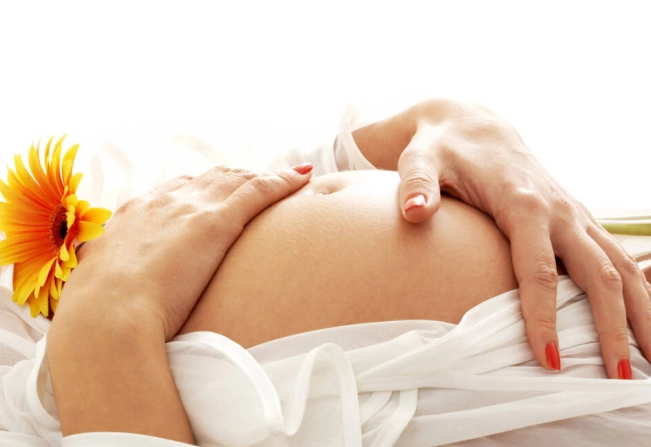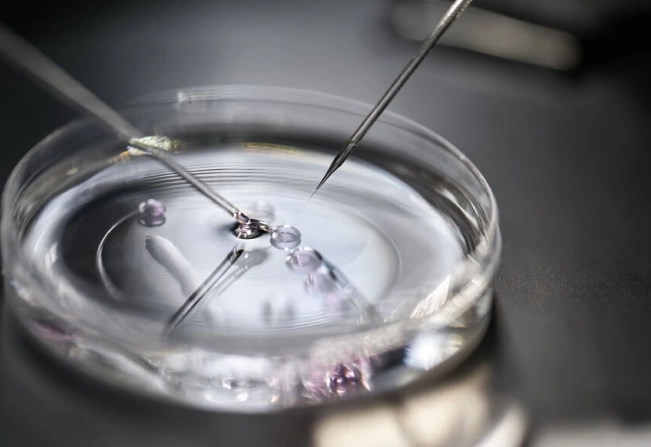Natural Cycle IVF involves a procedure in which a woman does not take ovulation-stimulating medications, and only one egg cell is used for fertilization. Let’s understand why this procedure exists despite being less effective than conventional IVF and who it is recommended for.
What is Natural Cycle IVF?
Naturally, in a woman’s ovaries, one egg cell matures during one menstrual cycle. Under such conditions, the chances of natural pregnancy in healthy couples range from 15% to 25% each month. Couples seeking IVF require higher chances and, therefore, more egg cells. The standard IVF procedure involves a woman taking hormonal medications to stimulate the ovaries. Through this therapy, ideally, 8 to 15 egg cells mature.
In some cases, ovulation stimulation is risky or ineffective. In such situations, Natural Cycle IVF is used.
What is Natural Cycle IVF? It is in vitro fertilization in which only one egg cell, naturally produced by a woman’s body without the use of hormonal medications, is utilized. In other words, a woman leads her usual life, and when the egg cell matures, it is retrieved.
However, in exceptional cases, a doctor may still prescribe an injection or a low-dose hormone medication:
- To stimulate the egg cell’s maturation.
- To halt the production of luteinizing hormone (LH hormone, which triggers the release of the egg cell from the ovary). This is usually necessary if the egg cell has already matured but the egg retrieval needs to be delayed for a few days (for instance, due to non-working days at the clinic).
- To increase the follicle size to the required dimensions for egg cell retrieval.
This will only be done as needed if you have no contraindications, and the low hormone dose will not harm your body.
Who is this method recommended for?
The Natural Cycle IVF protocol is primarily applied when a woman cannot take hormonal medications for medical reasons:
- The woman is prone to developing ovarian hyperstimulation syndrome (OHSS). This is a syndrome where the ovaries swell and become painful. Severe cases can lead to intense pain, vomiting, blood clotting, and more. Risk factors for OHSS include polycystic ovary syndrome (PCOS), a large number of follicles, previous episodes of OHSS, etc.
- Presence of oncological diseases. For example, some types of breast cancer are sensitive to estrogen. Taking estrogen-based medications can worsen the woman’s condition.
- Low ovarian reserve.
- Previous unsuccessful experiences with hormonal medications: the medications did not help produce a greater number of egg cells.
Some women choose Natural Cycle IVF due to religious beliefs, as they do not want the remaining egg cells or embryos to be destroyed or frozen. On the Family Pathway website, you can find clinics that offer Natural Cycle IVF.
How does Natural Cycle IVF work?
Natural Cycle IVF consists of the following stages:
- Preparation for the procedure. The woman receives recommendations regarding nutrition, lifestyle, and vitamin intake.
- Examinations and blood tests. At the beginning of the new cycle, the woman undergoes several ultrasounds, examinations, and blood tests to monitor follicle maturation and hormone levels.
- Egg retrieval. The procedure is conducted under ultrasound guidance. The doctor inserts a thin tube with a needle into the ovary (via the vagina and cervix). At the other end of the tube is a suction device. The doctor punctures the follicle and extracts the fluid containing the egg cell. The procedure lasts approximately 45 minutes and is performed under anesthesia.
- Sperm retrieval. Usually, the man provides a sperm sample on the day of egg retrieval. Occasionally, frozen sperm may be used.
- Embryo cultivation. Depending on the chosen protocol, conventional fertilization (adding sperm to the egg cell in a dish and waiting for fertilization) or ICSI (injecting a sperm directly into the egg cell) is performed.
- Embryo transfer. Typically, embryos are transferred into the uterus on days 3 to 6 after fertilization.
By medical indications or the couple’s preference, doctors may perform PGD (preimplantation genetic diagnosis) – a procedure to detect chromosomal abnormalities in embryos. For this purpose, a few cells are removed from the embryo and analyzed. PGD identifies deviations that can lead to Down syndrome, cystic fibrosis, spinal muscular atrophy, Huntington’s disease, sickle cell anemia, and others. This procedure is safe for the embryo.
Advantages of Natural Cycle IVF
The primary advantages of Natural Cycle IVF are as follows:
- Absence of OHSS Risk. There is no risk of Ovarian Hyperstimulation Syndrome (OHSS), a condition where the ovaries become swollen and painful.
- Side Effects from Hormonal Medications. Unlike conventional IVF, there are no side effects associated with the use of hormonal medications, such as headaches, nausea, or abdominal bloating.
- Minimal Risk of Multiple Pregnancies. The risk of having a multiple pregnancy (e.g., twins or triplets) is nearly negligible.
- Option for Repeated Egg Retrieval in Subsequent Cycles. Women can undergo egg retrieval again in the next menstrual cycle if needed.
- Lower Cost Compared to Conventional IVF. The absence of expensive ovulation-stimulating drugs reduces the overall cost of the IVF program.
Suitable for Women Over 40: Natural Cycle IVF can be recommended for women over 40 years old, especially if their ovaries do not respond well to ovulation stimulation.
Disadvantages of Natural Cycle IVF
The main disadvantage of Natural Cycle IVF is the lower chance of success compared to conventional IVF. In the event of successful fertilization, the couple will have only one embryo, which may or may not successfully implant in the uterine lining. Overall, the chances of pregnancy within one cycle are approximately 7-10%. Other drawbacks of Natural Cycle IVF include:
- Unsuccessful egg retrieval. Due to spontaneous ovulation (the egg cell naturally leaving the ovary), egg retrieval may not be possible in some cases.
- Inability to choose the embryo. There is a possibility that the embryo may have chromosomal abnormalities, making its transfer to the uterus futile, and there won’t be a backup option.
- High risk of needing multiple IVF cycles. There is a higher likelihood of needing to undergo the Natural Cycle IVF procedure multiple times to achieve a successful pregnancy.
In general, IVF with ovulation stimulation offers better chances of successful fertilization, pregnancy, and childbirth. Therefore, Natural Cycle IVF is recommended exclusively in cases where conventional IVF is not feasible. You can find clinics offering various protocols, including Natural Cycle IVF, on the Family Pathway website.

